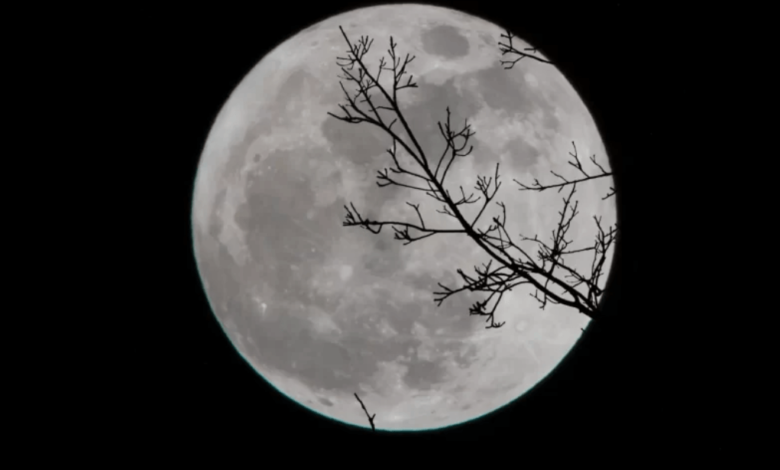The Moon is Beautiful Isn’t It Meaning? Unveiling Its Profound

The phrase “The Moon is Beautiful Isn’t It Meaning?” transcends mere observation, embedding itself deeply within the fabric of cultural and emotional expression. This exploration delves into the multifaceted interpretations of this simple yet profound statement, revealing its historical origins, cultural significance, and the emotional resonance it holds across different contexts.
Introduction
The night sky, adorned with the serene beauty of the moon, has captivated humans for millennia. It’s a symbol of unspoken feelings, a muse for artists, and a beacon for lovers. The phrase “The Moon is Beautiful Isn’t It meaning?” particularly resonates with profound meanings, far beyond a mere appreciation of the moon’s beauty. It’s a gateway to exploring deep emotional connections and cultural narratives that have shaped human interaction with the lunar spectacle.
Read also: VMCCAM: Revolution in Visual Media Control and Management
Historical Origins
Tracing back to Japan, the phrase owes much of its popularity to the literary genius Natsume Soseki. He transformed a direct confession of love into this nuanced, poetic phrase, embedding a rich emotional and cultural layer to the act of moon-gazing. It’s a testament to the Japanese aesthetic of subtlety and the unspoken, where feelings are conveyed through the appreciation of nature’s beauty rather than direct expressions.
Literal Interpretations
At face value, the phrase is a simple admiration of the moon’s beauty. Across cultures, the moon has been a central figure in art and poetry, symbolizing purity, tranquility, and the eternal. Its luminous presence in the night sky has inspired countless works, highlighting the universal appeal of its serene beauty.
Figurative Meanings
Beyond the literal, the phrase encapsulates deep emotional undercurrents. It signifies a shared moment of connection, a silent understanding between individuals. The moon becomes a mirror reflecting unspoken feelings, a common thread in human experiences of love, longing, and introspection.
The Moon in Japanese Literature
Japanese literature is replete with references to the moon, serving as a backdrop for stories of love, loss, and the passage of time. From classical haikus to modern novels, the moon’s imagery enriches narratives, adding layers of meaning and emotion.
Comparative Cultural Perspectives
While the phrase has its roots in Japan, the symbolism of the moon transcends borders. In Western culture, the moon also represents love, beauty, and mystique, though the expressions of these themes may differ. This comparative analysis reveals the universal human fascination with the moon, despite cultural variations.
Psychological Interpretation
Psychologically, the moon’s beauty can evoke a sense of wonder and introspection. It prompts individuals to ponder their place in the universe, stirring emotions that range from joy to melancholy. The phrase thus becomes a reflection of the human psyche’s complex relationship with nature.
Philosophical Aspects
The moon’s constant presence and changing phases have also inspired philosophical musings about life, change, and permanence. It symbolizes the cyclical nature of existence, encouraging a contemplative approach to life’s mysteries.
The Moon in Popular Media
From classic cinema to contemporary music, the phrase and the imagery of the moon continue to inspire creative expression. It serves as a metaphor for beauty, mystery, and emotional depth, resonating with audiences across generations.
Linguistic Analysis
The elegance of the phrase lies in its simplicity and depth. Linguistically, it demonstrates the power of suggestion and the beauty of indirect expression, challenging translators to capture its essence across languages.
The Moon and Romanticism
The moon has long been associated with romance and mystery. This phrase epitomizes the romantic ideal of finding beauty in shared moments and unspoken bonds, celebrating the subtleties of human emotion.
Educational Implications
Educators can use the phrase to teach the importance of cultural context in language and expression. It’s an excellent example of how language can convey complex emotions and ideas in a nuanced manner.
Social and Cultural Impact
The enduring popularity of the phrase reflects its deep cultural resonance. It has become a symbol of the beauty found in shared experiences and the unspoken connections that bind us.
Scientific Perspectives on the Moon
While the moon’s beauty is celebrated in literature and art, its scientific significance cannot be overlooked. From influencing the tides to affecting biological rhythms, the moon’s impact on Earth is profound, offering a fascinating juxtaposition to its romantic portrayals.
The Moon in Astrology and Mythology
In astrology and mythology, the moon holds powerful symbolism, representing intuition, emotions, and the inner self. Its phases are often linked to human behavior and destiny, enriching the phrase with mystical connotations.
The Moon’s Influence on Art and Creativity
Artists have long looked to the moon as a source of inspiration. Its ethereal beauty and symbolic richness have fueled creativity across mediums, from painting to poetry.
Personal Reflections and Experiences
The phrase invites personal reflections on moments shared under the moonlight. These stories highlight the moon’s role in shaping personal narratives and memories, emphasizing its emotional significance.
Read also: Learn All bout Techasia24.In Category Internet
Conclusion
“The Moon is Beautiful Isn’t It meaning?” is more than an appreciation of the lunar beauty. It’s a phrase rich with history, emotion, and cultural depth, encapsulating the human experience in its gaze toward the night sky. As we ponder its meanings, we connect with generations past and present, united in our wonder and contemplation of the moon’s timeless allure.
FAQs
What inspired the phrase “The Moon is Beautiful Isn’t It meaning?”?
- Natsume Soseki, a Japanese novelist, is credited with popularizing the phrase, using it as a poetic way to express love indirectly.
How does the moon symbolize love in different cultures?
- Across cultures, the moon often symbolizes love, beauty, and mystery, serving as a backdrop for romantic expressions and connections.
Can the phrase have different meanings based on context?
- Yes, the phrase can convey a range of emotions and ideas, from a simple appreciation of beauty to deep, unspoken feelings.
Why is the moon significant in literature and art?
- The moon’s universal appeal and symbolic richness make it a powerful motif in literature and art, inspiring reflections on love, life, and the natural world.
How does the phrase reflect Japanese aesthetics?
- The phrase exemplifies the Japanese aesthetic of subtlety and indirect expression, valuing the beauty in what is not overtly said.
What does the moon represent in psychology and philosophy?
- In psychology, the moon can symbolize the subconscious and emotions, while in philosophy, it might represent change, cycles, and the nature of reality.





